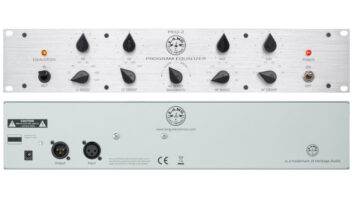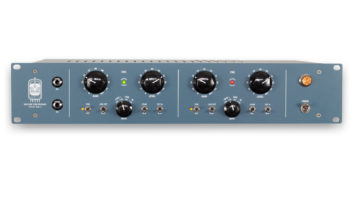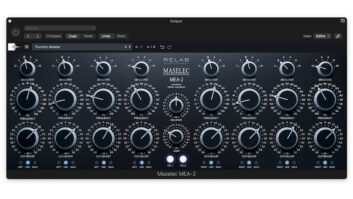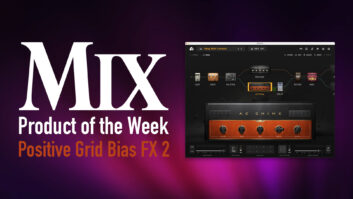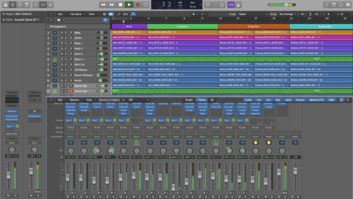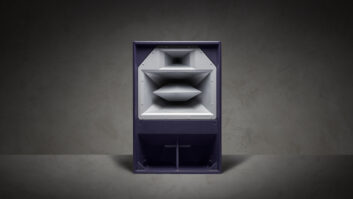
Simplicity is an art unto itself. A master chef can cook anamazingly complex dinner requiring hours of work, but sometimes asimple meal-made with fresh ingredients-can taste better than anelaborate 9-course production. And the situation with electronic gearis similar: Flashing lights, hundreds of knobs and onboard LCD readoutsmay be pretty-and occasionally useful-but there’s no substitute forhigh-quality parts and a straightforward circuit design.
Such is the case with the Great River Electronics MP-2, a distinctlynon-flashy 2-channel mic preamp that provides excellent performance ofits seemingly simple task, by placing top-grade components in a Class Adiscrete design in an unassuming chassis. And in a world filled withdozens of “me-too” mic preamps created from the same couple ofchipsets, it’s refreshing to pop the cover on the MP-2 and actually seea discrete transistor circuit, with Jensen input transformercoupling.
Like its name-the MP-2 refers to mic preamp/2-channels-the MP-2 isoutwardly to the point. The rear panel only has four audio connectors:two XLR inputs and two XLR outputs (all pin 2 hot), along with aremovable IEC power cord socket for the internal power supply-no wallwarts here! On the front panel, the controls for each channel areplainly laid out, with toggle switches to select -15dB pad, polarity(phase) invert and phantom power on/off. You won’t find plasma meteringwith an infrared remote for tweaking meter ballistics: The MP-2 has asimple (there’s that word again) clipping LED on each channel thatlights when the output is -3 dB below clipping; it ain’t fancy but itdoes the job. Gain is set by a 24-position rotary switch with 22 stepsin 2dB increments for 22 to 64 dB of gain. Besides the ability to getfrom maximum to minimum settings easily, this continuously rotarycontrol offers one other hidden advantage: The two settings on eitherside of the control’s “6 o’clock” position set the input to +14 dBunity gain, although this is not marked or indicated on the frontpanel.
Each channel also has a front panel 1 1/4 4-inch, high-impedance(greater than 500kilohm) input, which is useful for direct injectionapplications. There is no external mic/DI input switch-plugging intothe 11/44-inch jack automatically disables the mic input and brings theHi-Z signal into the gain section after the phase reverse and padcircuit. Used with the High-Z input, the stepped gain control has arange of 8 to 50 dB.
Other than the unmarked unity gain positions, running the MP-2 isplug-and-go. My first session with the preamps turned out to bepercussion overdubs on an acoustic guitar album, using an AKG C414 ULSin omni position to record a suspended finger cymbal hit with a metalstriker. The track was cut directly to an Alesis M20 20-bit ADAT, andin this particular case, I was looking for a triangle-like tone, butwith a faster attack and less sustain than a triangle. This wouldprovide a good test of the MP-2’s ability to track transients as wellas offer a chance to check out its high-end frequency response. Theresults in both cases were excellent; the attack was crystal-clear,with a nice, shimmering decay that was exactly what I wanted.
Next up, I used the MP-2 with a pair of CAD’s excellent VX2 tubemicrophones, criss-crossing the mics’ figure-8 patterns in a Blumleinarrangement to record a group of singers cutting background tracks.This track featured very wide dynamics, ranging from fortissimo to aquiet murmur, and spotlighted the MP-2’s quiet EIN spec of -129 dBv(unweighted, 22kHz bandwidth). The sound was pure, uncolored and therewas no trace of noise whatsoever. A few days later, using the MP-2 ontwo Audio-Technica AT-4051s used as drum overheads on a rock sessionemphasized the fact that this preamp offers ample headroom when youneed it most. Even on snare-using an Audix D4 dynamic-the differencebetween the MP-2 and the stock preamps on my Soundcraft 600 console wasimmediately apparent.
The front panel High-Z inputs are a nice touch, and while they won’tcause me to replace the tube DIs I already have, the MP-2’shigh-impedance did a fine job of capturing different guitar pickups,from my 1964 Hofner Beatle bass to my 1997 Gibson Les Paul SpecialDouble Cutaway. The sound was clean and punchy, and adding a tubecompressor after the preamp provided everything I was looking for.
At $1,250 ($625/channel), the Great River MP-2 offers a clean,natural, preamp and DI reproduction at a great price. So who could askfor more? Well, Great River offers the MP-2 in alternate versions: TheMP-2M ($1,550) and 4-channel MP-4M ($2,575) add output transformers;the MP-2H ($1,575) has output transformers and unbalanced 11/44-inchoutputs. An MP-4 ($1,975) 4-channel preamp is also available. Inaddition, a transformerless model is $1,250 for two channels (MP-2X),$1,975 for four channels (MP-4X).
Great River Electronics, 3056 East 65th Street, Inver Grove Heights,MN 55076; 651/455-1846; fax 651/455-3224. Web site: www.greatriverelectronics.com.

